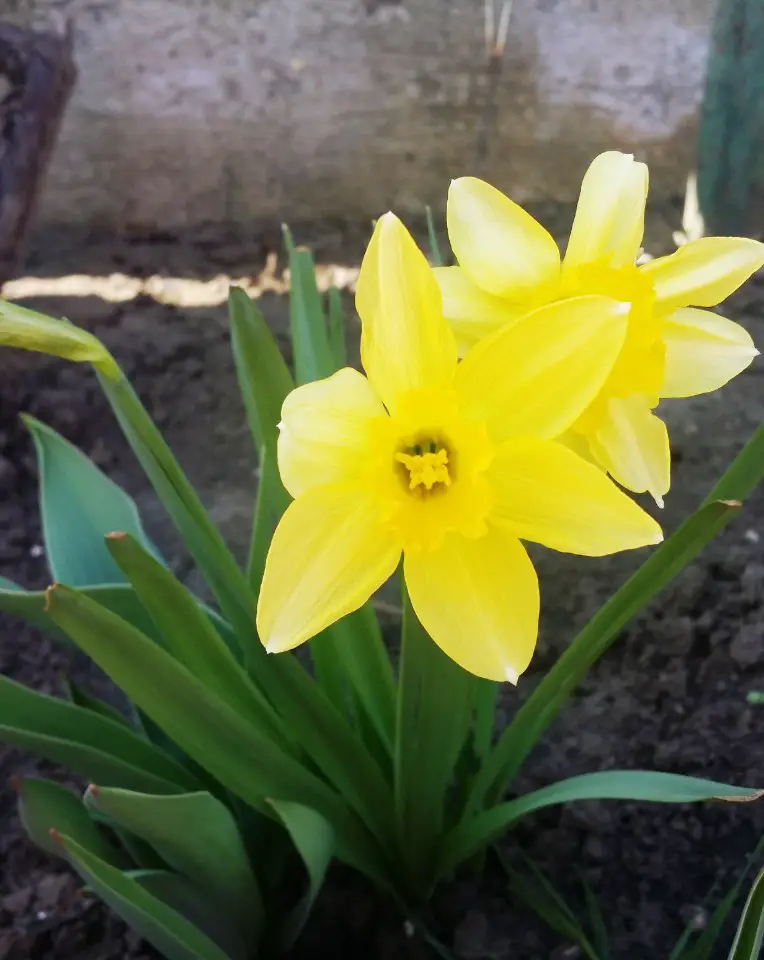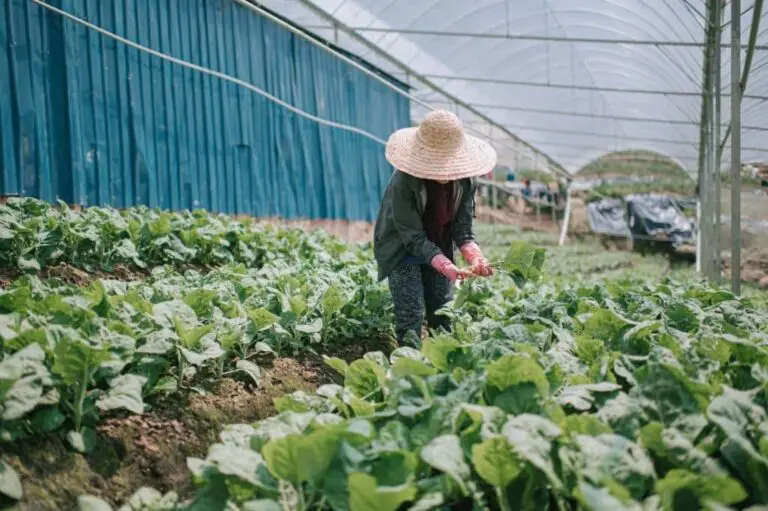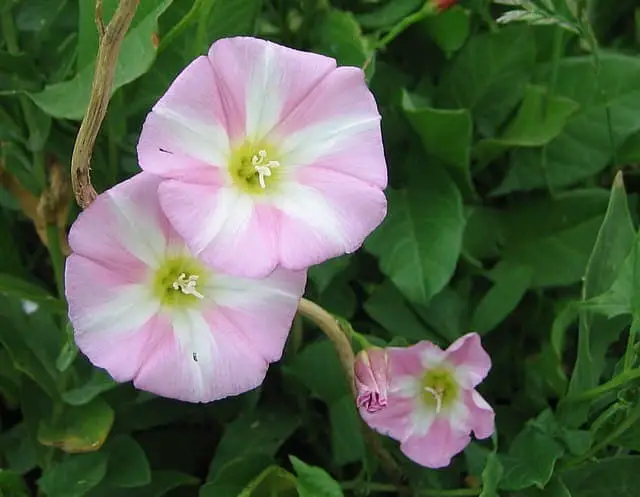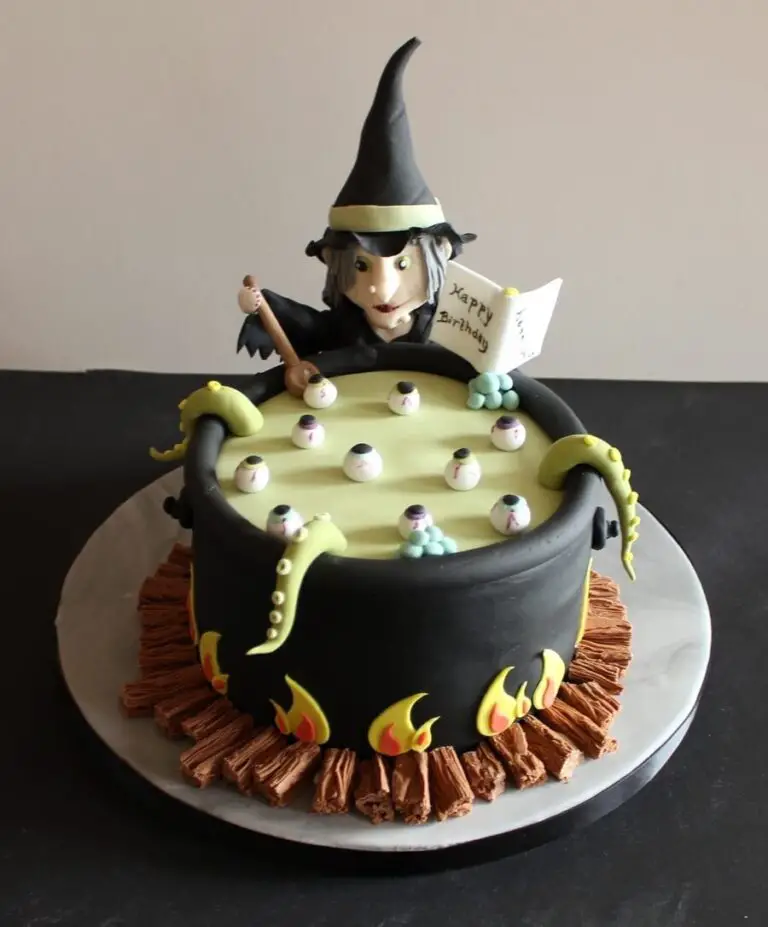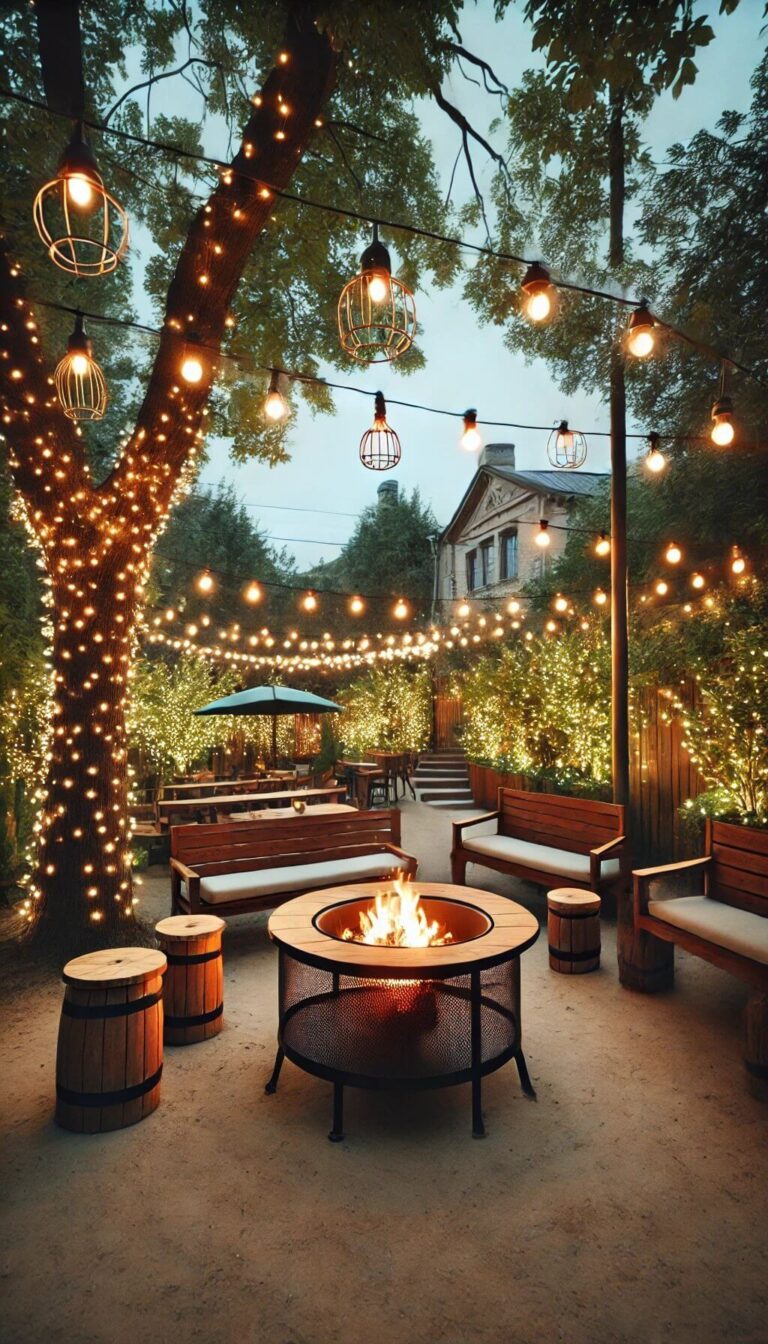32+ Different Types Of Lavender Plants (With Pictures)
Lavender, a popular plant with numerous uses, is renowned for its beautiful flowers and sweet fragrance. The ancient Romans even harnessed its scent to repel insects like mice from their homes. Today, lavender is cultivated into over 40 different species, each with its unique characteristics, uses, and growing conditions. From ornamental purposes to oil extraction, the various types of lavender offer a range of benefits.
The plant’s diverse nature extends beyond its uses, as different species thrive in distinct climates and soils. The varying types of lavender can be identified by their flowers, leaves, colors, and bloom times. This article aims to provide an overview of the numerous varieties of lavender, including their blooming periods and uses. Whether you’re looking to adorn your garden or simply explore the world of lavender, this guide will help you choose the perfect species for your needs.
How Many Types of Lavender Are There?
Lavender plants boast an impressive global presence, with their adaptability allowing them to thrive in nearly every environment. This is reflected in the staggering number of varieties, which are categorized into 50 distinct species. While there are currently over 450 recognized types, it’s likely that many more remain to be discovered. The proliferation of lavender varieties can also be attributed to the existence of hybrids, which result from crossing different species.
Furthermore, these plants are remarkably resilient and require minimal care, making them a popular choice for gardeners around the world.
32 Types Lavender Plants
English Lavender (Lavandula Angustifolia)
Lavandula Angustifolia, commonly referred to as English lavender or true lavender, is a widespread and highly cultivated species of lavender. Its origins date back to the Mediterranean region, where it’s known for creating breathtaking purple landscapes in regions like Provence. This versatile plant thrives in any soil condition, making it an ideal choice for gardens seeking a low-maintenance yet fragrant addition.
As expected from lavender plants, English lavender releases a subtle aroma when touched or brushed against, filling the air with its signature scent.
The plant’s beauty lies not only in its fragrance but also in its stunning floral displays. Lavandula Angustifolia produces clusters of flowers, known as inflorescences, which bloom in shades ranging from vibrant purple to soft violet, blue-toned purple, and dusky pink.
English lavender is highly prized for its essential oils, which are used in cooking, potpourri, and other applications. This species also comes in various varieties, each with its unique characteristics. While some English lavenders grow underground, others can be found above ground, offering a range of options for gardeners and enthusiasts alike.
Betty’s Blue (Lavandula angustifolia ‘Betty’s Blue’)
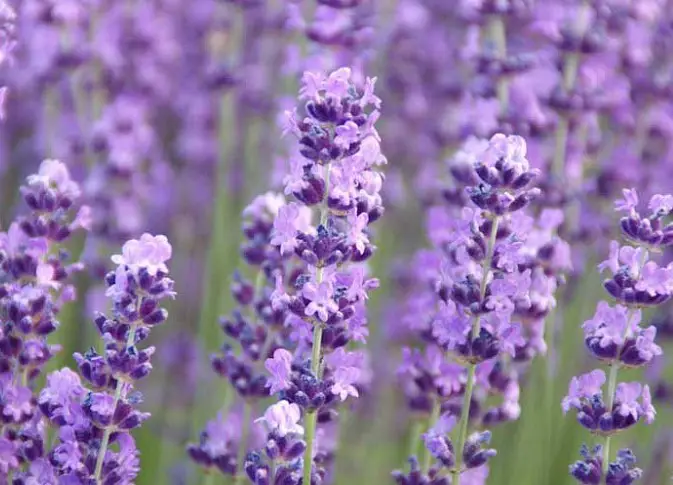
Betty’s Blue, a compact and tidy English lavender, is distinguished by its rounded growth habit and the deep purple-blue hue of its blooms, which closely match the variety’s name. This low-maintenance shrub is particularly well-suited to serving as a small hedge or border in gardens, where it can thrive with minimal care.
While some lavender varieties may be pruned to maintain a uniform shape, Betty’s Blue tends to grow slightly taller than its peers, making it a unique addition to any garden setting. As an added bonus, the fragrant flowers of this variety are highly prized for both their fresh and dried arrangements, offering a versatile and aesthetically pleasing option for gardeners.
Folgate (Lavandula angustifolia ‘Folgate’)
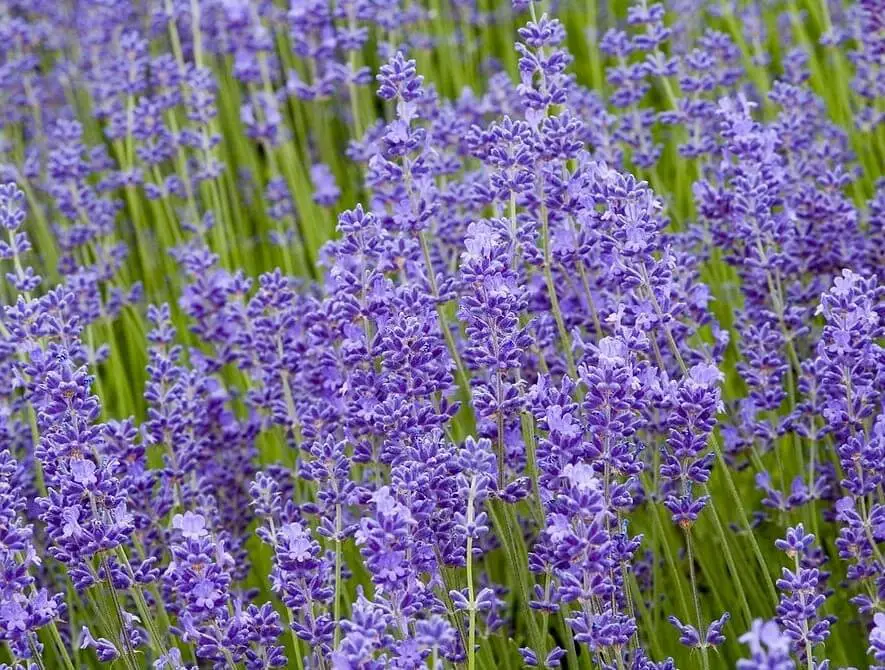
Folgate English lavender, a hardy and resilient variety, showcases its beauty once or twice during the middle to late spring. The stunning purple blooms rise majestically above the evergreen foliage, with an added touch of drama as they seem to glow with an ultra-violet hue at dusk. This robust lavender is capable of withstanding cold temperatures, although it thrives in full sun.
As winter’s chill subsides, Folgate lavender always returns, eager to adorn your garden with a breathtaking sea of flowers. Its essential oil is highly prized for its medicinal and aromatic properties.
Hidcote (Lavandula angustifolia ‘Hidcote’)
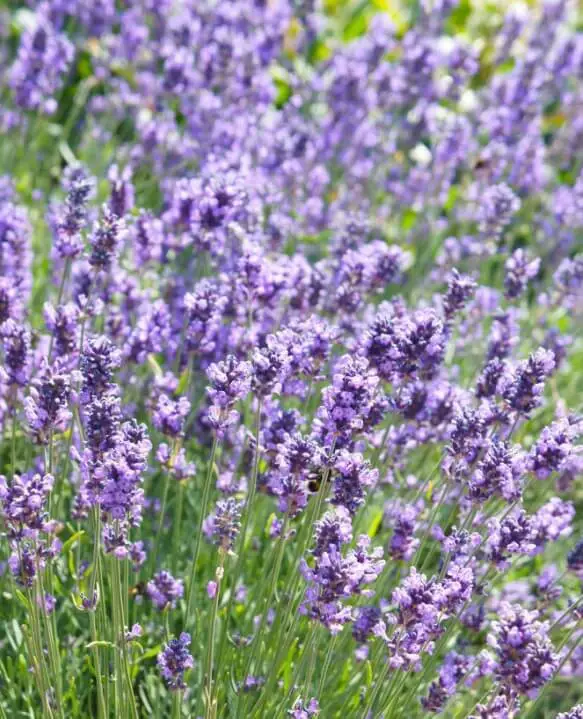
Hidcote lavender is a stunning purple-hued bloom that thrives in diverse environments, making it an ideal choice for gardening enthusiasts. Its impressive adaptability has earned it the prestigious Award of Garden Merit from the Royal Horticultural Society, guaranteeing its success in any garden. This hardy variety is particularly noteworthy for its ability to flourish almost anywhere, withstanding various conditions without compromising its beauty.
When it blooms in late spring and early summer, Hidcote’s vibrant color remains striking even after wilting, making it a perfect addition to any garden seeking to showcase an array of flowers.
Jean Davis (Lavandula angustifolia ‘Jean Davis’)
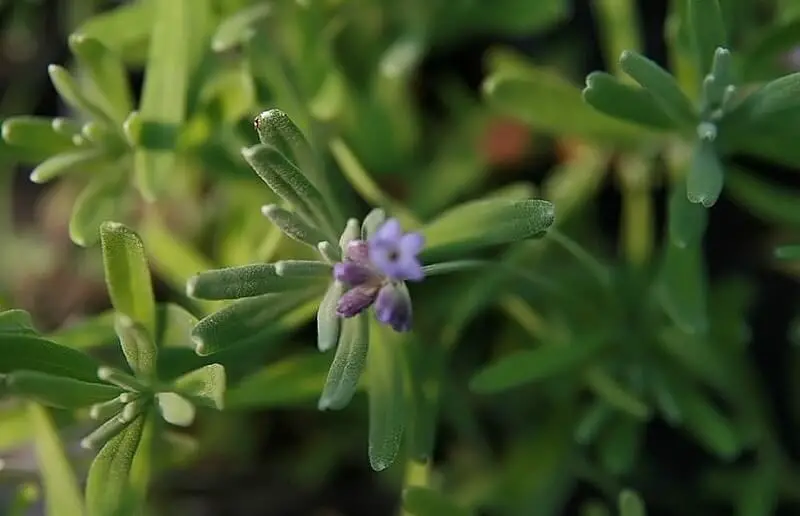
If you’ve noticed vibrant greenery popping up in your neighborhood, chances are you’re looking at Jean Davis lavender. This low-maintenance variety stands out not only for its charming name but also for its remarkable resilience to drought. As it blooms with delicate pale pink flowers, reminiscent of traditional lavender varieties. But what truly sets it apart is the pleasant aroma that wafts from both its flowers and foliage.
With a bit of pruning, you can coax Jean Davis lavender into a lush, full shape – simply snip away in the spring to encourage new buds to form.
Lavenite Petite (Lavandula angustifolia ‘Lavenite Petite‘)
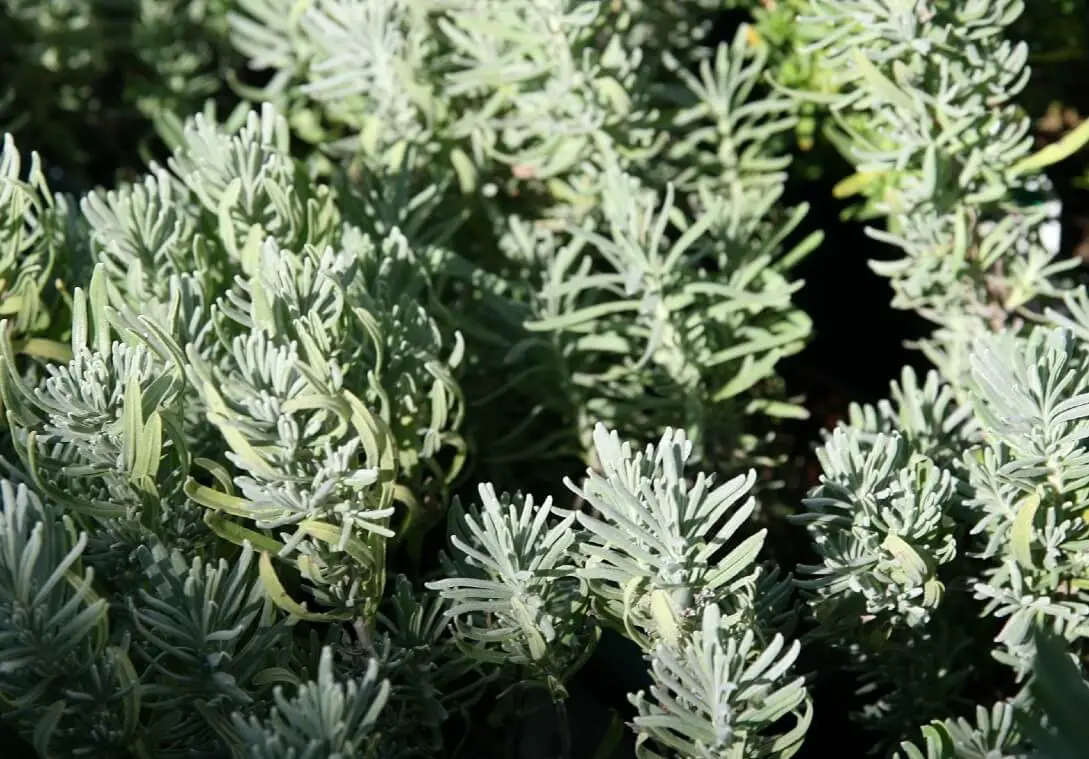
English lavender species Lavenite Petite boasts a charming name, which accurately reflects its captivating appearance and alluring fragrance. Its most notable feature is its delicate, 6-inch long blooms that emerge in the spring season. Interestingly, when trimmed, the plant transforms into lush, bushy foliage. This transformation occurs during the summer months when pruning takes place.
Little Lottie (Lavandula angustifolia ‘Little Lottie‘)
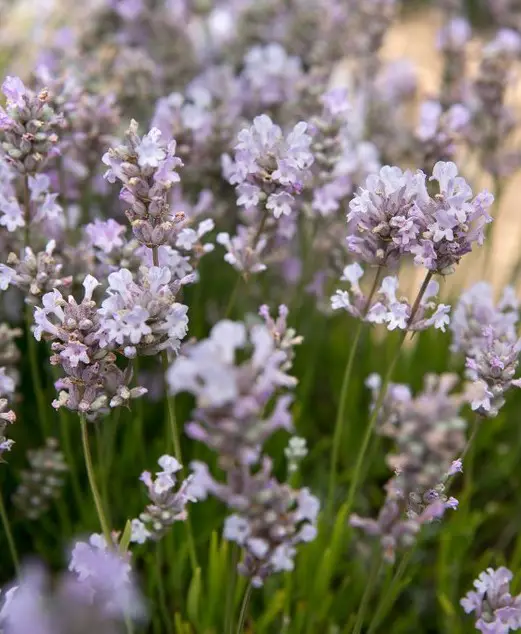
Little Lottie, a dwarf variety of lavender, is part of the English lavender species. Measuring around 30 cm in height, this compact plant can thrive as an evergreen if cultivated in warm winter climates. Its distinctive feature is its delicate purple-pink flower spikes, which rise above a bed of green-grey foliage. This low-maintenance herb excels in dry soil conditions and full sun, making it an ideal choice for creating stunning garden borders.
Melissa (Lavandula angustifolia ‘Melissa’)
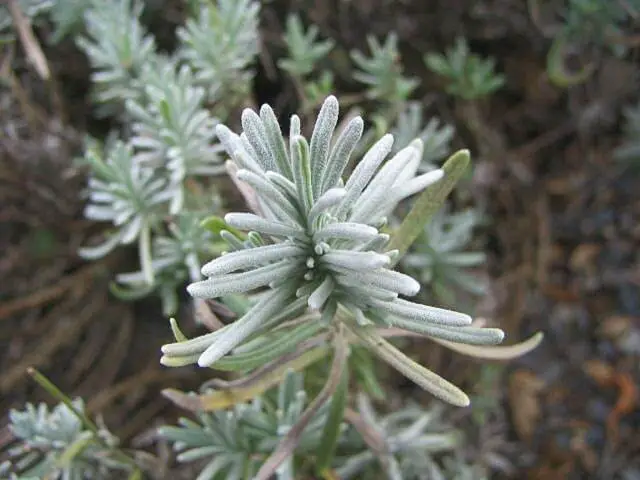
The wondrous world of human names seems to have drawn inspiration from the enchanting lavender flower, elevating their significance. Among these, Melissa stands out for its captivating aroma and remarkable characteristics. As this lovely name evolves over time, it transforms into a soft pink hue with subtle white undertones. What sets Melissa apart is its prolonged blooming period compared to other varieties of lavender flowers with similar hues.
Melissa Lilac (Lavandula angustifolia ‘Melissa Lilac’)
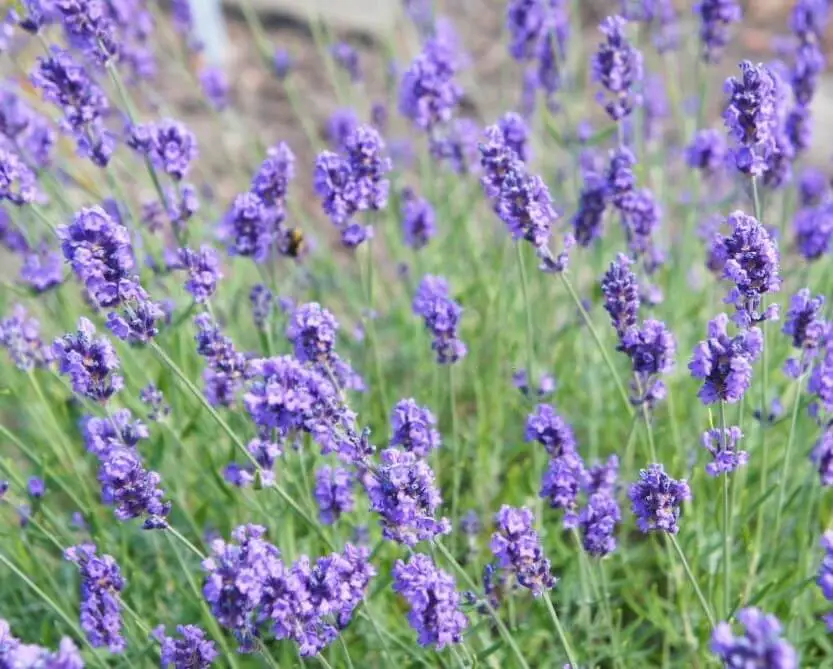
Melissa lilac’s unique charm is largely attributed to its striking silver-gray foliage, which creates a visually stunning landscape. The flowers themselves are a treat for the senses, emitting a sweet fragrance reminiscent of fluffy blooms. When touched or brushed against, both the leaves and flowers release a delightful aroma, making this plant a true sensory delight.
To encourage optimal blooming, it’s recommended to prune Melissa lilac at the end of spring, allowing it to flourish in the warmth of summer. Whether planted along garden borders or used as a standalone statement piece, Melissa lilac is sure to make a beautiful impression.
Miss Katherine (Lavandula angustifolia ‘Miss Katherine‘)
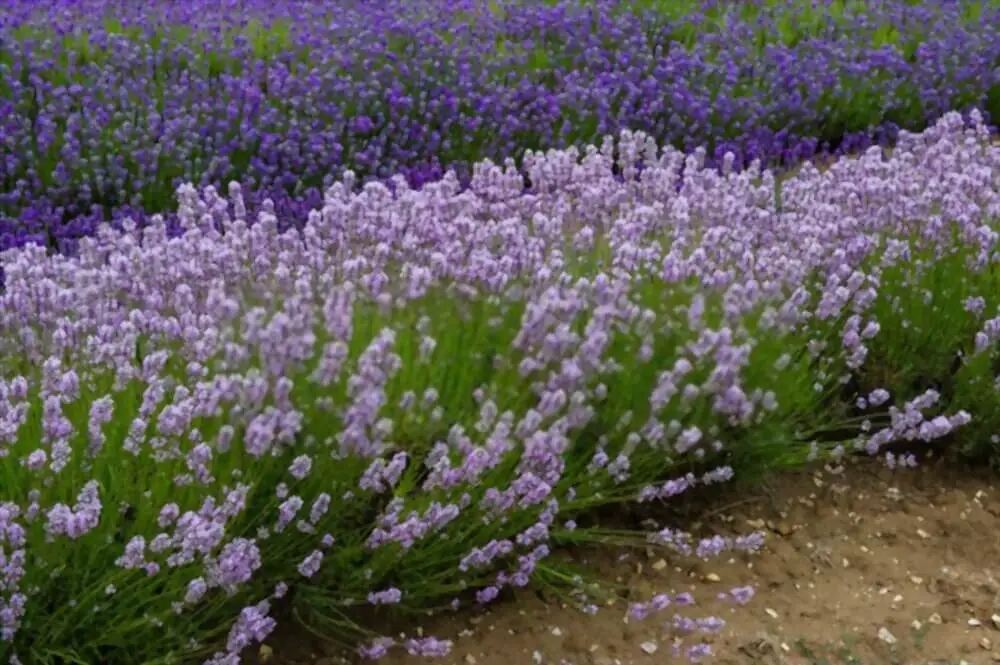
Miss Katherine, a stunning variety of flower, thrives in well-drained alkaline soil that receives full sun. This evergreen beauty is notable for its annual blooming period, which typically occurs in late spring or early summer, showcasing vibrant pink blooms with deep, rich shades.
Beyond this brief flowering period, Miss Katherine plants can withstand hot and dry conditions, making them an excellent choice for those seeking low-maintenance yet visually striking additions to their garden or landscape.
Munstead (Lavandula angustifolia ‘Munstead‘)
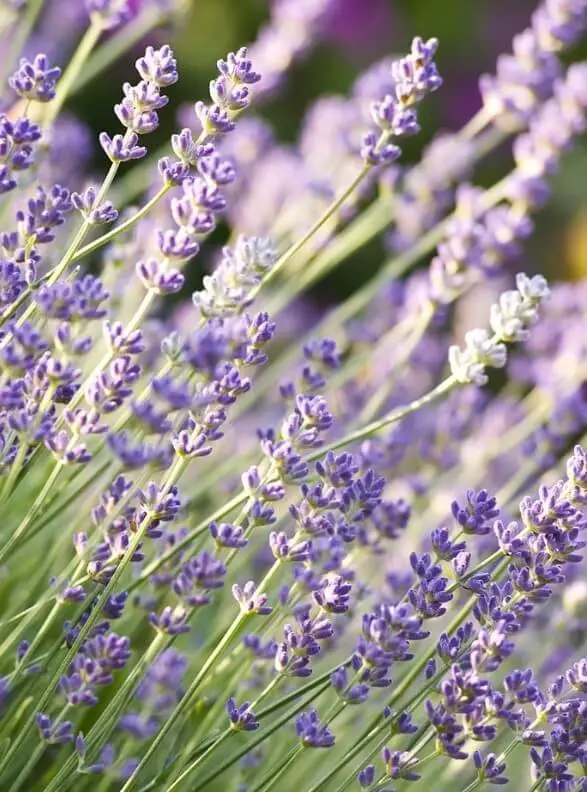
Munstead lavender’s compact growth habit has contributed significantly to its widespread popularity. Its delicate violet-purple blooms are accompanied by striking silvery foliage, adding a touch of elegance to any garden setting. The fragrance emitted by the flowers is particularly noteworthy, filling the air with a soothing aroma.
To encourage this lovely plant to thrive and reach its full potential, consider pruning it back to around eight inches in winter, and repeating this process every three months throughout the year.
Nana Alba (Lavandula angustifolia ‘Nana Alba‘)
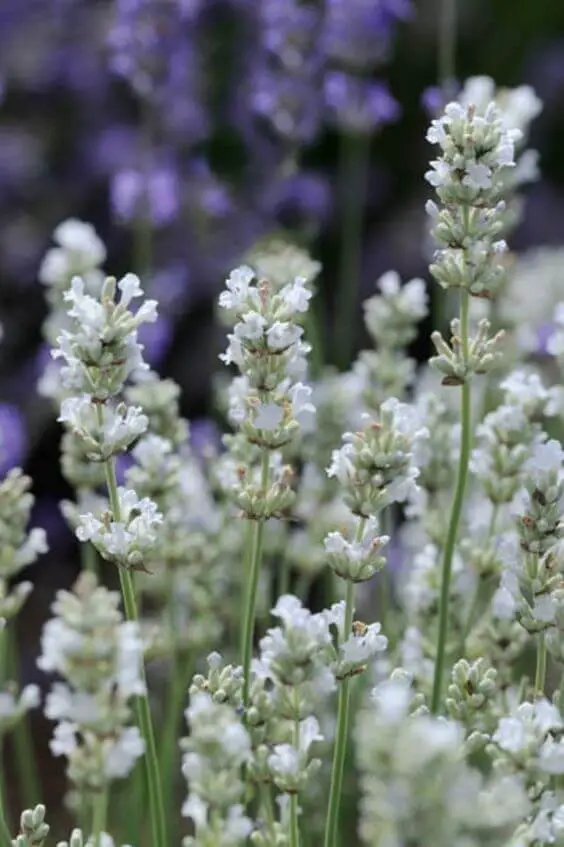
While other English lavender varieties are known for their pink hue, Nana Alba stands out with its striking white flowers. These blooms grow on short, sturdy stems adorned with stiff spines, adding a unique texture to the overall appearance. The compact plant also boasts dense, grayish foliage, creating a visually appealing and bushy shape. As a popular miniature variety, Nana Alba is well-suited for creating beautiful flower beds that thrive in midsummer.
Rosea (Lavandula angustifolia ‘Rosea‘)
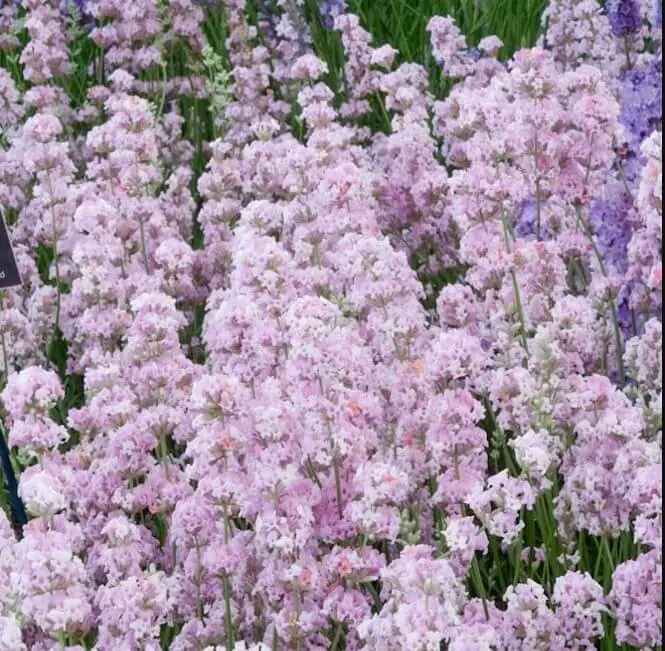
The enchanting Rosea, with its delicate rose-pink hue, is a favorite among garden enthusiasts for its unique frothy flowers. While it’s often overlooked in favor of other lavender varieties, the Rosea boasts an impressive ability to create breathtaking flowerbeds and gardens. With a moderate growth rate, these hardy plants thrive in a range of conditions, producing their stunning blooms around late spring and summer.
Royal Purple (Lavandula angustifolia ‘Royal Purple‘)
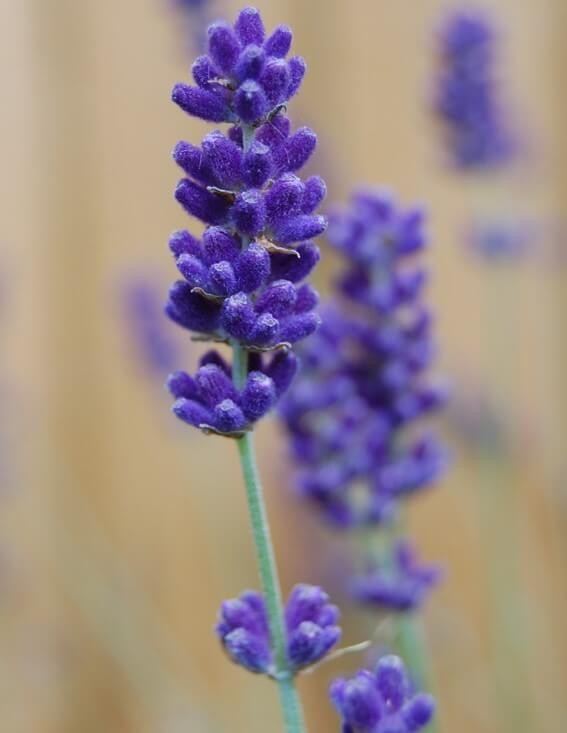
The majestic royal purple is renowned for its intensely fragrant, delicate purple blooms. When the English lavender comes into bloom during early summer, it presents a breathtaking display of beauty. One of its most striking features is that it retains its regal purple hue even after drying. This lovely plant thrives as an informal hedge or low-growing groundcover, adding a touch of elegance to any outdoor space.
Thumbelina Leigh (Lavandula angustifolia ‘Thumbelina Leigh‘)
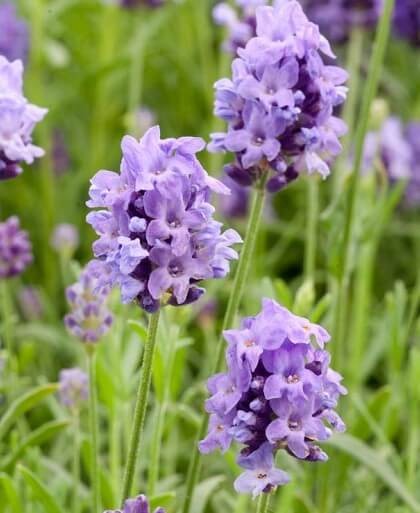
Thumbelina Leigh is renowned for its potent fragrance, emitting a strong scent that’s hard to ignore. This particular variety of English lavender grows up to one foot tall and thrives in well-drained soil bathed in full sunlight. A distinguishing feature of Thumbelina Leigh is its dark bluish plump flower spikes, which set it apart from other English lavender varieties.
As an added bonus, this lavender produces blooms up to three times a year, with the majority occurring during the summer months. Its compact growth habit and profuse flowering make it an ideal choice for garden borders, where it adds a pop of color and fragrance.
Portugese Lavender (Lavandula Latifolia)
Portuguese lavender, originating from Portugal and northern Italy, has been a popular choice for breeding hybrid lavenders due to its ability to attract pollinators. The Lavandula latifolia species is characterized by its simple yet elegant flower arrangements, making it a sought-after ingredient in both culinary dishes and beverages.
When used in cooking, the leaves and flowers of this lavender variety release a sweet fragrance that not only delights humans but also attracts butterflies and honeybees.
Broadleaf
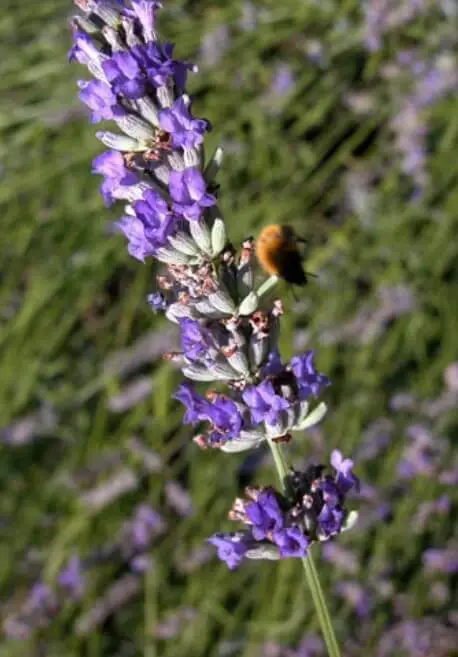
Characterized by its potent fragrance, Broadleaf is a distinct type of Portuguese lavender that boasts unique and striking green foliage reminiscent of fur. The plant’s pale purple blooms adorn long spikes, adding to its visual appeal. This fragrant flora is often employed in aromatherapy due to its strong aroma, which also attracts beneficial insects like butterflies and bees.
With its ability to thrive in direct sunlight and warm climates, Broadleaf lavender is an evergreen that makes a lovely addition to any garden or indoor space.
Portuguese Giant (Lavandula stoechas ‘Portuguese Giant’)
The Portuguese giant, aptly named for its impressive floral displays, is no exaggeration with regards to its enormous blooms. The plant’s massive flower heads are a sight to behold, measuring around 10 to 12 inches across and blooming continuously throughout the season. One of the standout features of this variety is its strong, sweet fragrance, which is a magnet for honeybees.
In addition to its pleasing aroma, the Portuguese giant also requires minimal maintenance, thriving in sunlight and typically blooming late in the spring.
Hybrid Lavender/Lavandin (Lavandula x intermedia)
Hybrid lavender varieties were developed by crossing English and Portuguese lavender species, resulting in plants that produce an abundance of large flower spikes. Unlike other types of lavender, these hybrids bloom later in the season and require full sun to thrive. One of their most notable characteristics is their versatility – the flowers can be used fresh-cut or dried, making them a popular choice for a variety of applications.
Not only do they have practical uses, but they also make a beautiful addition to any garden, offering a range of colors and textures to admire.
Grosso (Lavandula x intermedia ‘Grosso’)
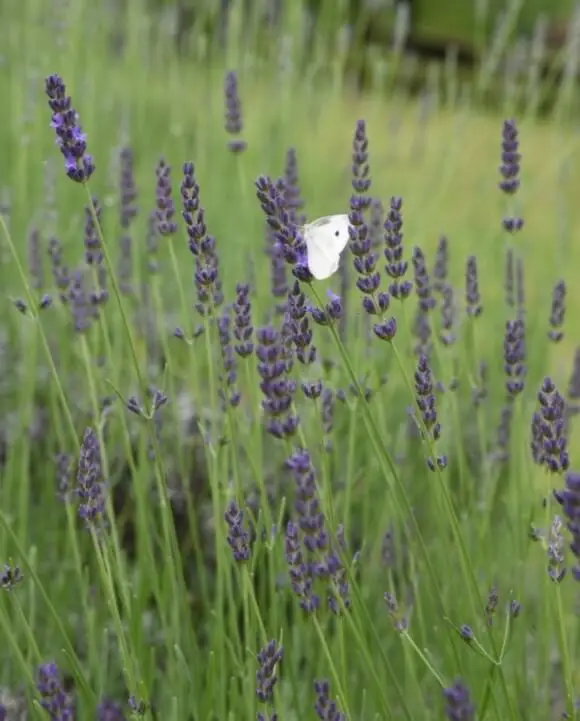
Grosso lavender is instantly recognizable due to its striking dark stems that rise tall, accompanied by the vibrant display of dark purple flowers. A notable characteristic of this variety is its relatively mild fragrance, which while pleasant, is not as potent as some other lavender types.
What sets Grosso apart from others is its ability to thrive in environments with low temperatures, making it an ideal choice for gardeners who want to grow their lavender in colder climates, such as those with winter temperatures ranging from 15 degrees or lower.
Hidcote Giant (Lavandula x intermedia ‘Hidcote Giant’)
Hidcote lavender stands out due to its impressive stem size, making it an attractive option for gardeners seeking a statement piece. Characterized by its vibrant violet hue and ability to spread effortlessly, Hidcote thrives in the warmth of summer. Its sweet fragrance also makes it a popular choice among pollinators like bees and butterflies.
Impress Purple (Lavandula x intermedia ‘Impress Purple‘)
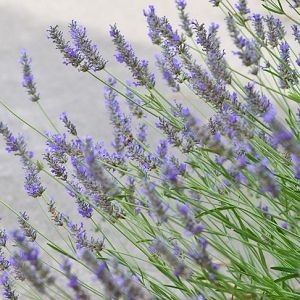
While lavender may not be as widely recognized for its functional value as some other plants, the impressive purple variety of lavender serves a significant purpose in human life. Its striking tall bunches of deep purple flowers are often used to create stunning bouquets that leave a lasting impression on everyone who sees them. Unlike other lavender species, the dark coloration of impress purple lavender sets it apart, making it a unique and memorable addition to any arrangement.
Lavandin (Lavandula x intermedia)
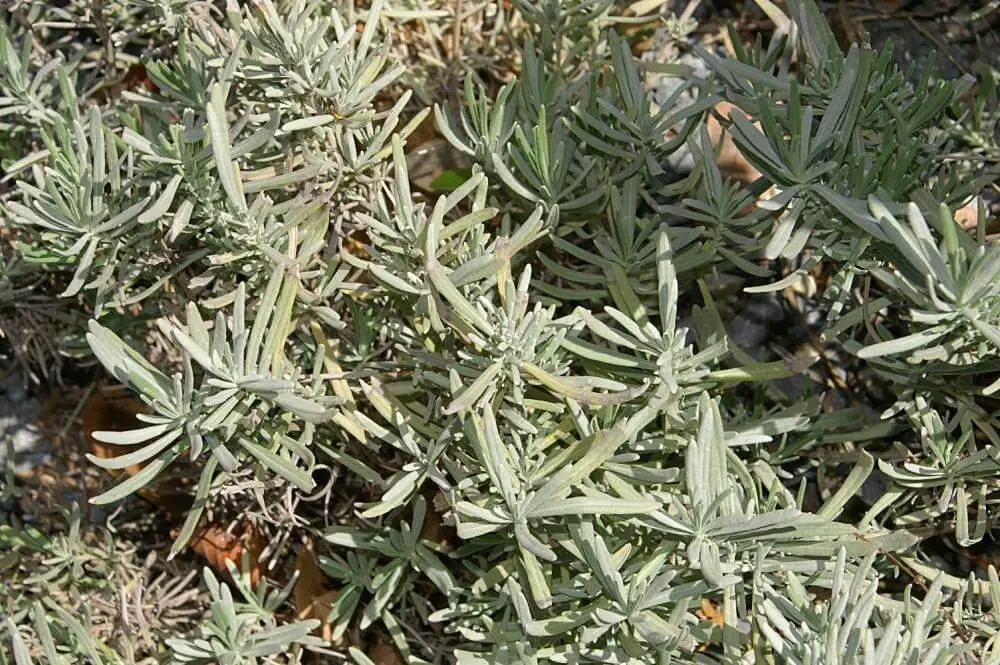
Lavandin lavender, a hybrid of English and Portuguese lavender, boasts a remarkable resilience to varying temperatures. This adaptability allows it to thrive in both cold and warm weather conditions. However, when the environment is conducive to growth, lavandin can spread rapidly and requires minimal maintenance. Moreover, its distinct aroma is highly prized by many. Notably, this low-maintenance yet fragrant herb is a popular choice among gardeners due to its ease of cultivation.
Phenomenal (Lavandula x intermedia ‘Phenomenal‘)
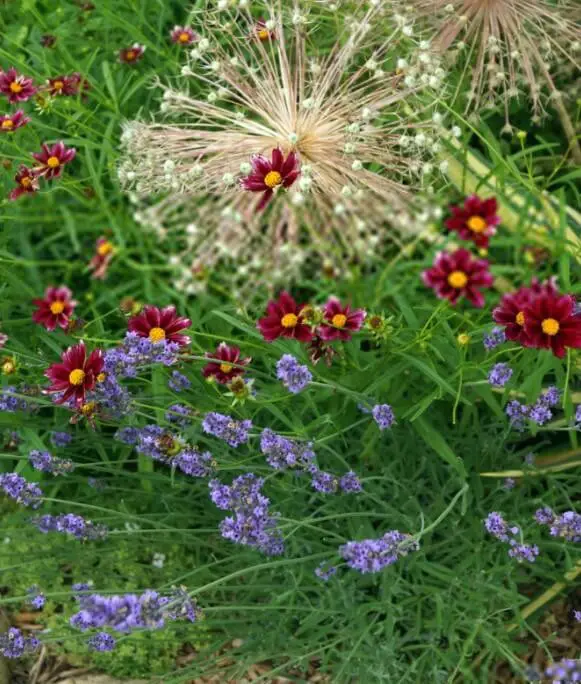
Phenomenal flowers have a unique characteristic that sets them apart from others – they bloom earlier, often attracting bees and butterflies seeking their sweet nectar. The vibrant violet-blue petals emit a pleasant fragrance, further enticing these pollinators. Standing tall at up to 30 feet, these remarkable plants can be cultivated in your own garden, ensuring you’re the envy of the neighborhood with the first burst of color.
Provence (Lavandula x intermedia ‘Provence‘)
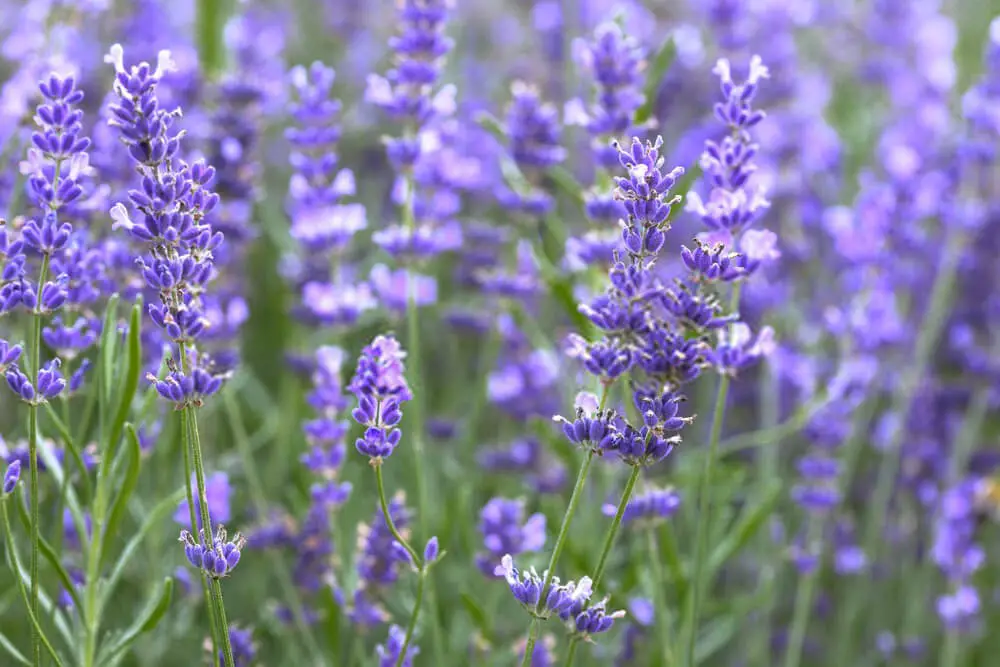
Provence lavender thrives in humid environments, making it an ideal choice for indoor gardening enthusiasts. This variety of lavender can reach heights of up to three feet, emitting a subtle yet pleasing aroma. While Provence excels as an indoor plant, it’s crucial to ensure it receives sufficient sunlight to promote healthy growth.
Seal (Lavandula x intermedia ‘Seal‘)
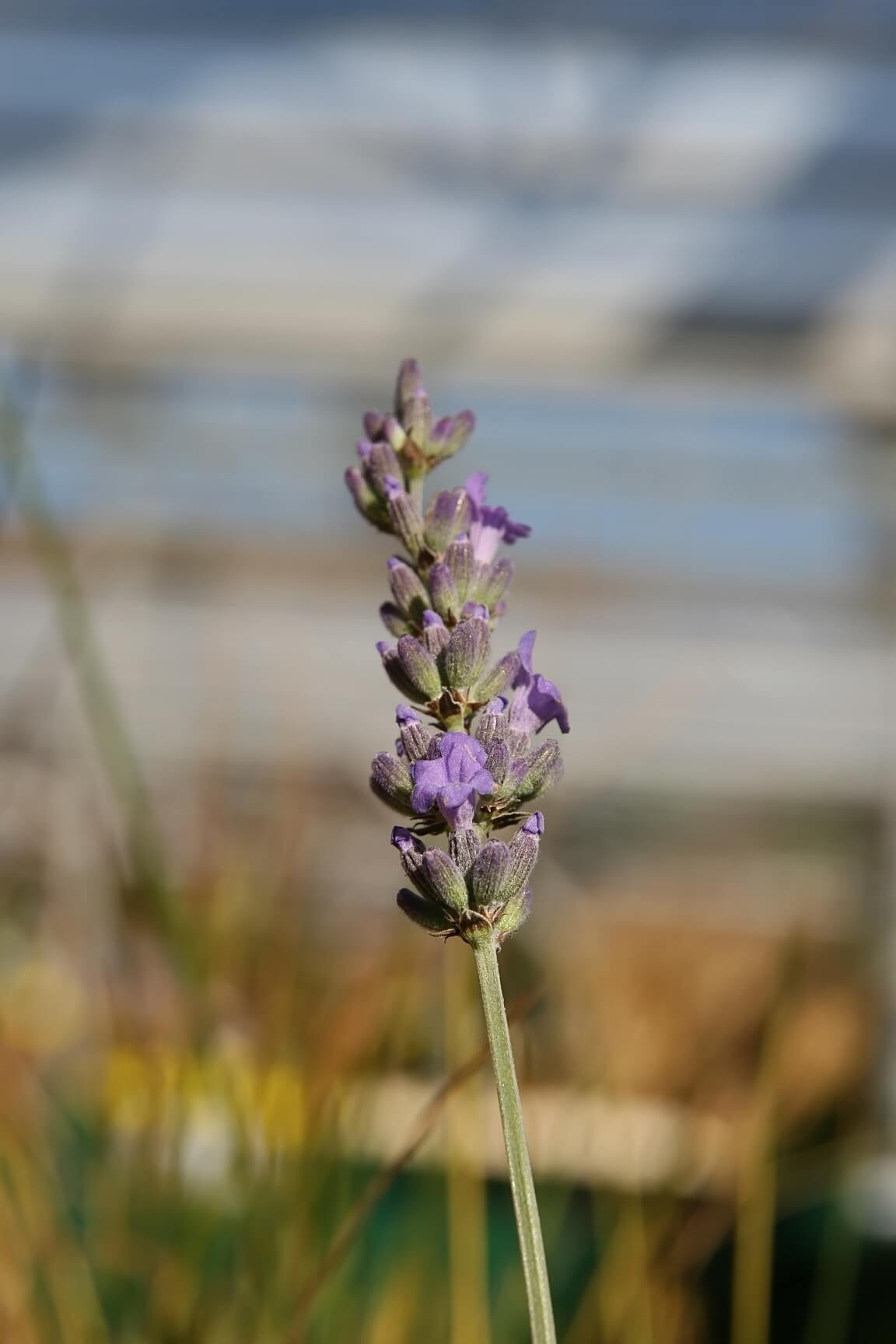
Among the tallest lavender species, Seal stands out for its impressive height, reaching up to three feet tall. Its versatility allows it to thrive in a wide range of environments, making it an ideal choice for gardeners with rocky or uneven terrain. While Seal may not boast the same potent fragrance as other flowers, it still emits a sweet and subtle scent that adds to its charm.
Spanish Lavender (Lavandula Stoechas)
While English lavender is renowned for its pleasant aroma, Spanish lavender stands out due to its remarkable heat tolerance. Native to the arid regions of the Mediterranean, this variety thrives in hot and dry conditions. If you reside in a warm climate, you’re in luck! There are several types of Spanish lavender that can be cultivated in your garden, offering a unique and resilient addition to your outdoor space.
Anouk (Lavandula Stoechas ‘Anouk’)
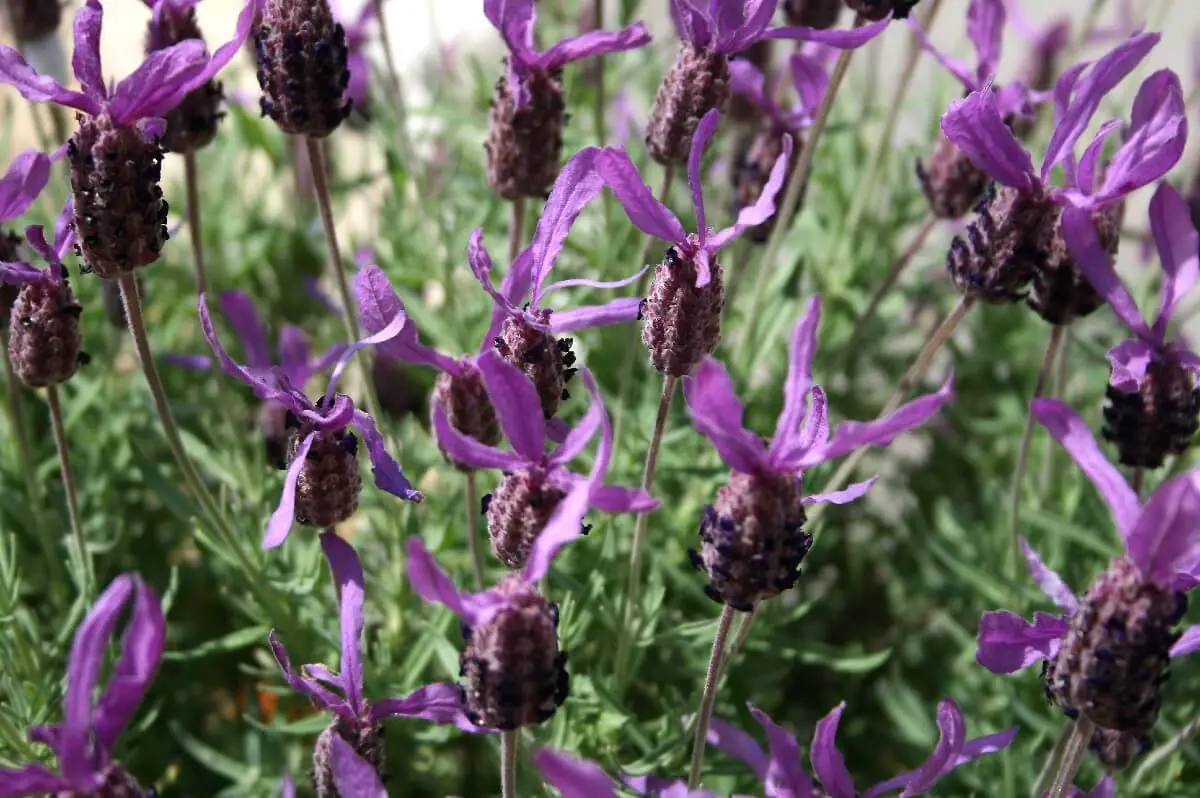
Anouk, a unique variety of lavender, defies the norm by blooming earlier than most others. In mid-spring, its rich, deep purple flowers burst forth from sturdy stems, showcasing delicate light purple petals. What’s more impressive is Anouk’s resilience to warm temperatures and scorching summers, allowing it to thrive in conditions that might challenge other lavender types.
Ballerina (Lavandula Stoechas ‘Ballerina’)
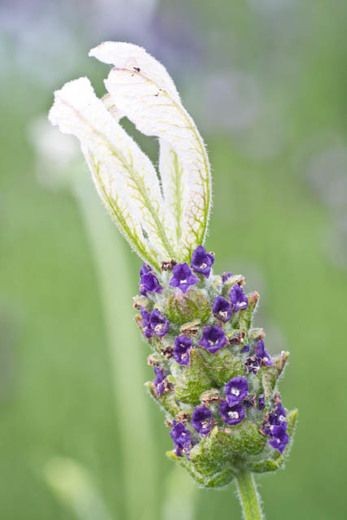
Ballerina, a type of Spanish lavender, is distinguished by its peculiar bulbs and white blooms that gradually transition to pink and purple hues as they mature. This characteristic sets it apart from other lavender varieties. The plant thrives in climates with moderate summers and winters, but it has an affinity for sunny conditions. Its strongly scented flowers produce two blooming cycles annually, showcasing a unique charm.
Fathead (Lavandula Stoechas ‘Fathead’)
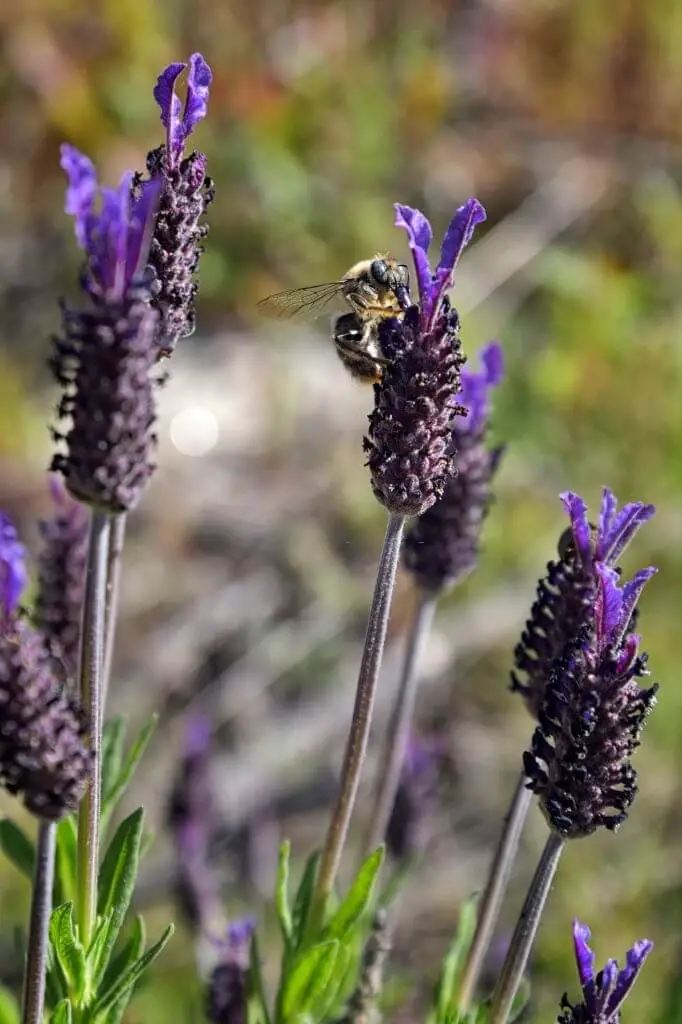
The Fathead, a type of lavender, boasts stunning features including its long-lasting blooms, which display rounded petals in a deep shade of purple or pink. These vibrant flowers thrive best when exposed to direct sunlight.
Fringed Lavender (Lavandula Dentata, French Lavender)
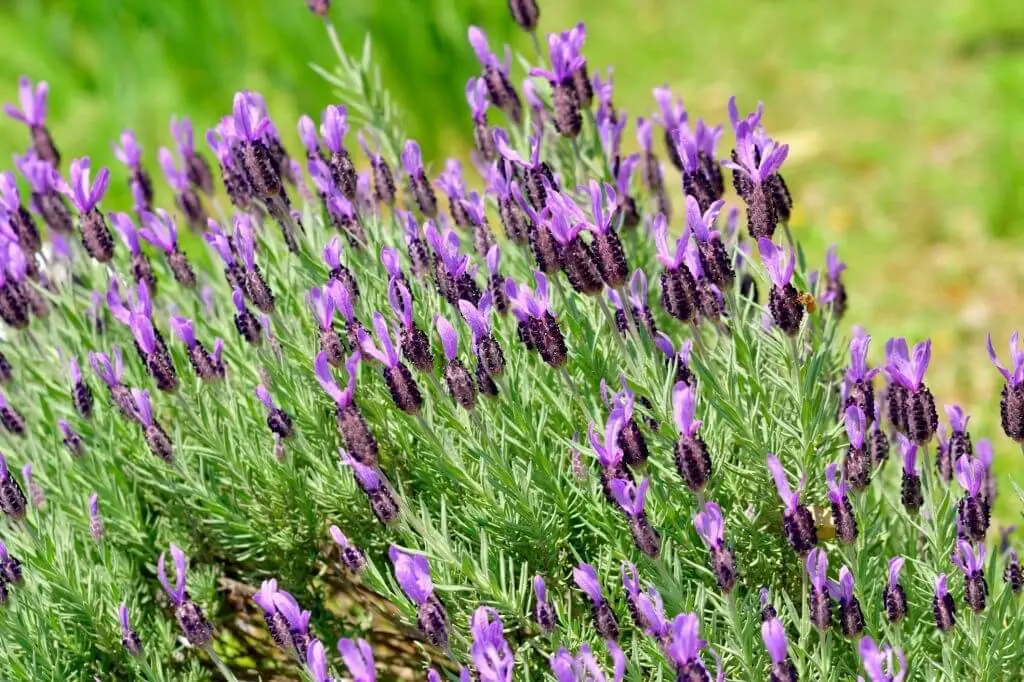
Lavender’s fringed charm lies in its breathtaking beauty, boasting an abundance of vibrant flowers throughout the summer months. What sets this variety apart is its remarkable resilience to heat and drought, making it an ideal choice for sunny areas where other plants may struggle. As a result, fringe lavender will bring a unique dimension to your garden, its fragrance filling the air and its soothing effect calming the senses.
Kew Red (Lavandula Stoechas ‘Kew Red’)
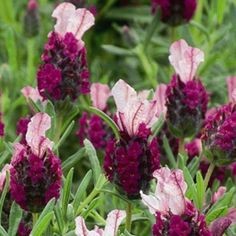
Kew Red, a distinctive Spanish lavender species, boasts dark pink petals that appear reddish in hue when viewed from afar, earning its name. This variety is also notable for releasing an intensely strong fragrance. Its flowering season spans the spring to fall period, with blooms remaining visible year-round under mild climate conditions.
Regal Splendour (Lavandula Stoechas ‘Regal Splendour‘)
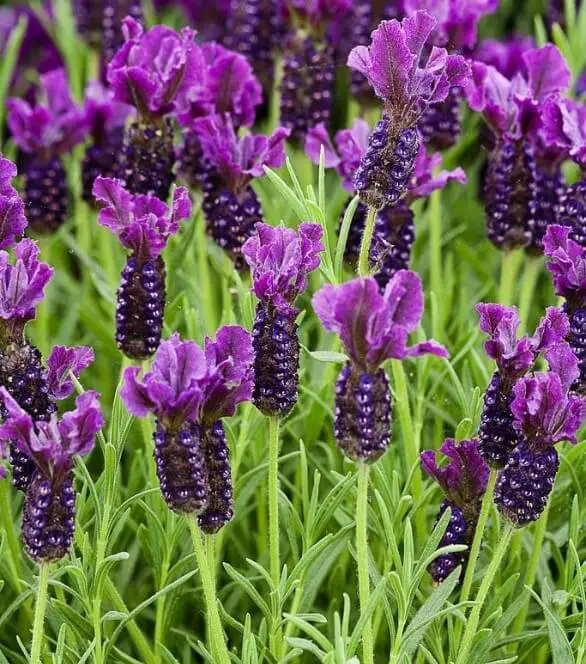
Regal Splendor’s majesty shines forth in its harmonious union of colors. The delicate balance of lavender’s purple-blue blooms and pink-purple petals creates a visually stunning display. Measuring up to three inches in height, this compact gem exudes an intoxicating aroma that effortlessly draws in pollinators like bees, ensuring its reputation as a magnet for beneficial insects.
Egyptian Lavender (Lavandula Multifida)
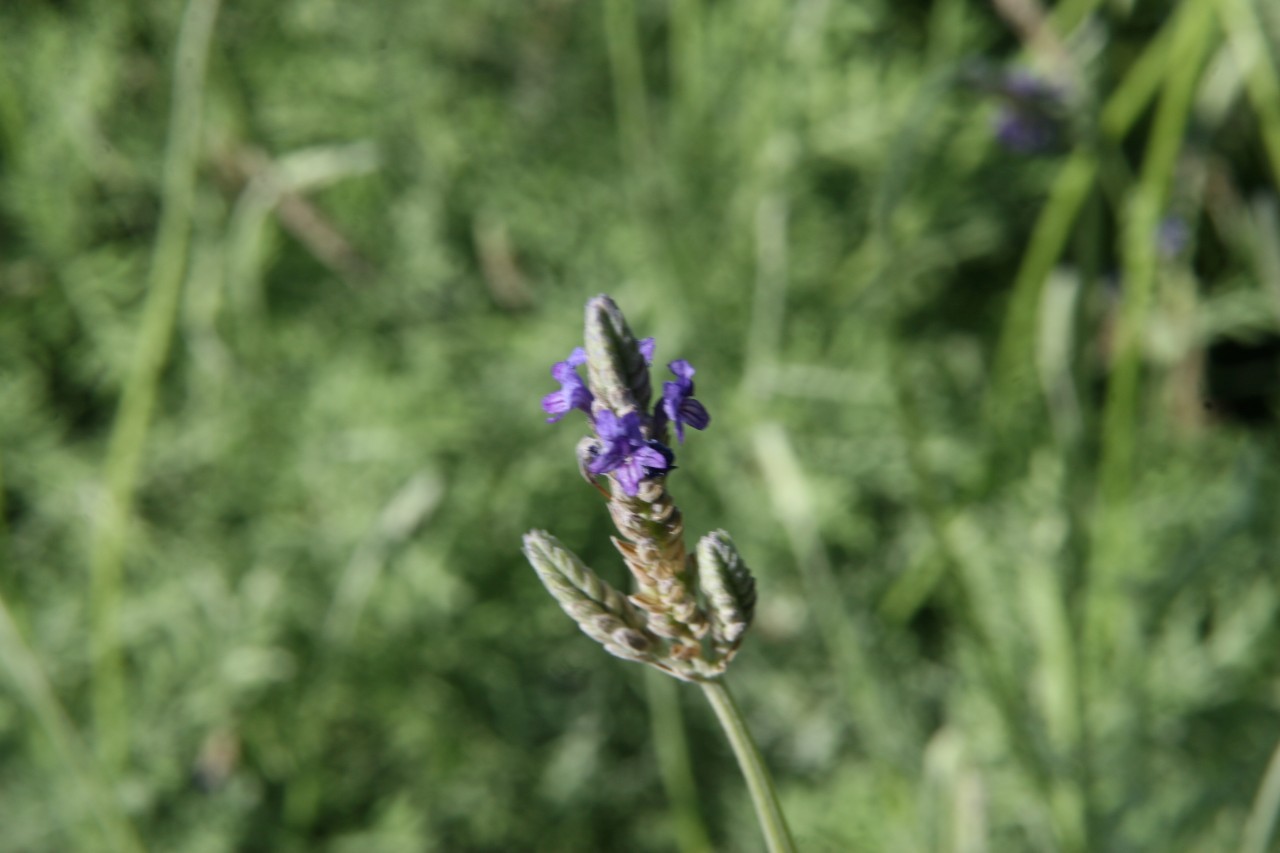
One of the unique features of Egyptian lavender is its distinctive furry leaves, which bear a striking resemblance to ferns, earning it the nickname ‘fern-leaved lavender’. This characteristic sets it apart from other species. Notably, their aroma also diverges from that of other lavenders, with a slightly acidic tone.
While they are prized for their rapid spreading habit and late-spring blooming cycle, Egyptian lavenders are surprisingly adaptable and can thrive even without regular watering, as long as they’re planted in well-drained soil.
French Lavender (Lavandula Dentata)
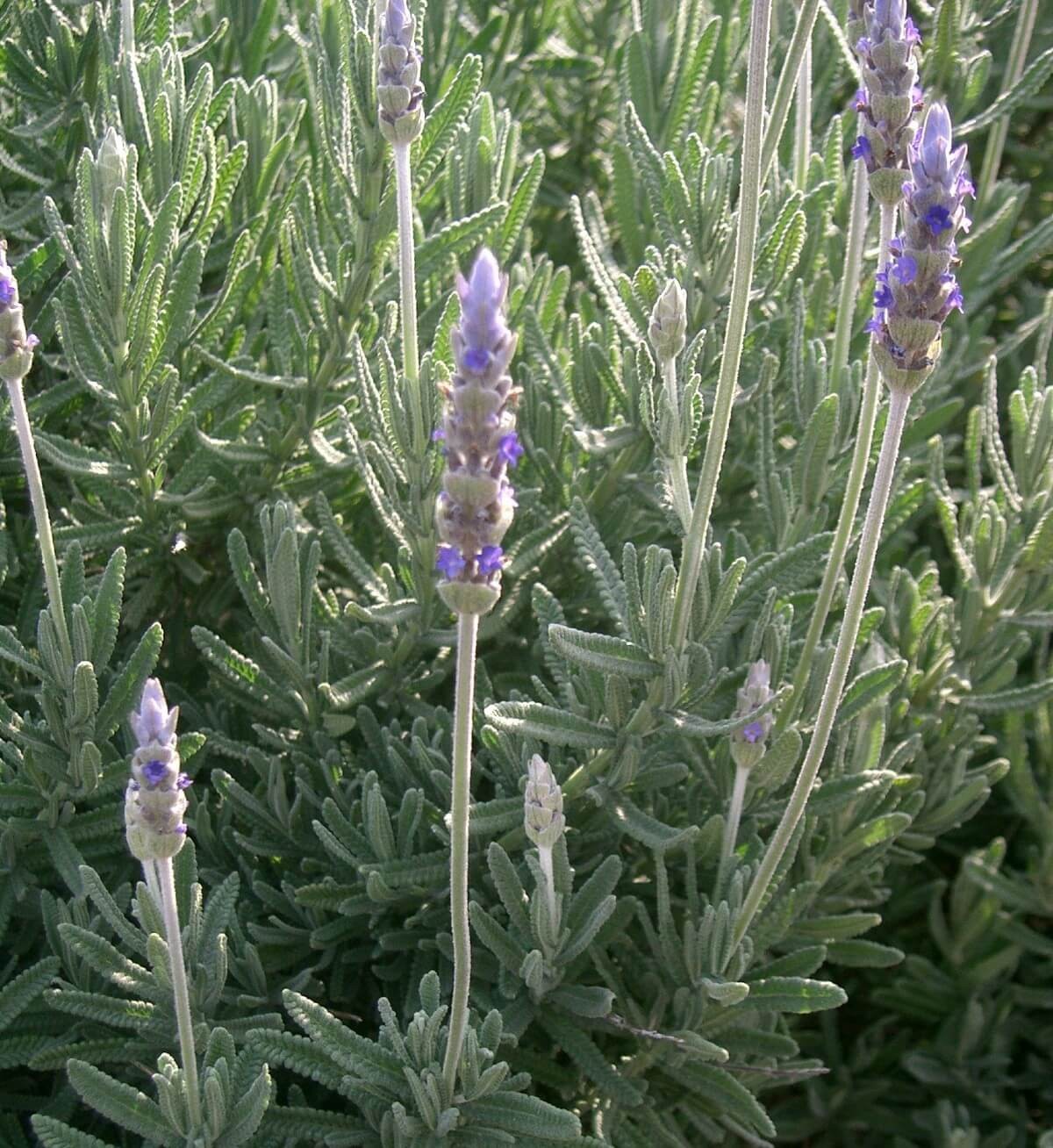
While French lavender may produce more subtle blooms with a lighter hue compared to other lavender varieties, its adaptability to diverse climates is truly noteworthy. However, it’s essential to note that this hardy plant has its limitations when it comes to temperature extremes. Furthermore, the French lavender species boasts a significant range of sizes and growth habits, with some varieties capable of spreading outwards and reaching up to two feet in height.
Dwarf Lavender
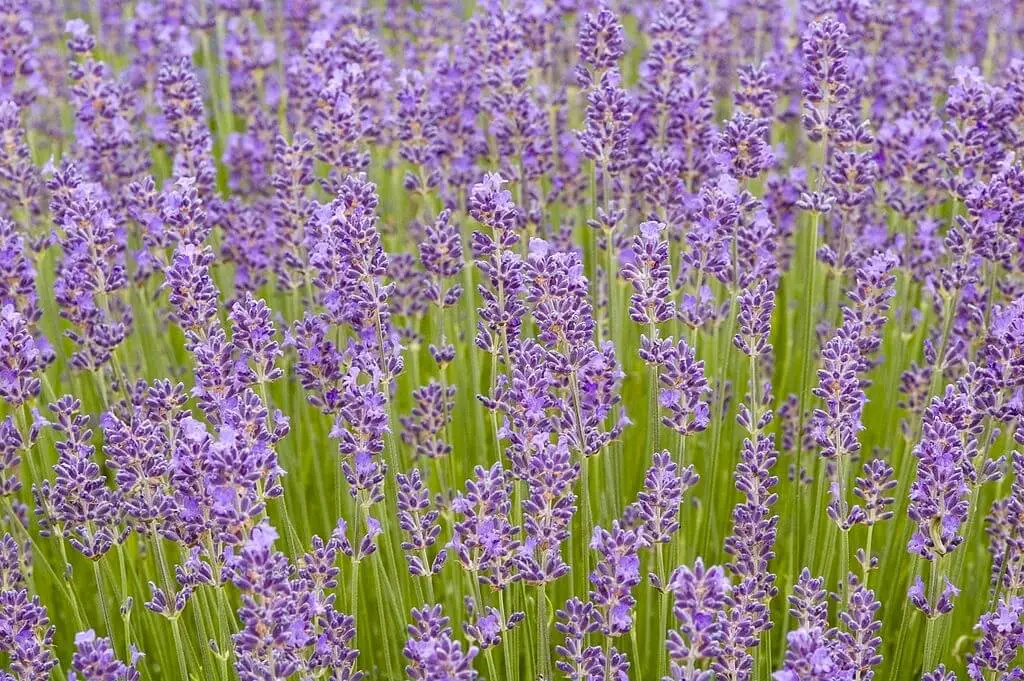
Dwarf lavenders are renowned for their adaptability to sunny conditions, thriving in temperatures that might challenge other varieties. While they can tolerate high heat, they struggle to grow in shaded areas, where the warmth and light they need to flourish are lacking. Despite their compact stature, ranging from 20 to 40 centimeters in height, these dwarf lavenders possess an impressive ability to reach beyond their natural size when properly watered.
Their diminutive size belies the potency of their fragrance, which is truly remarkable. Dwarf lavenders are ideal for incorporating into pathways, garden borders, and rockeries, where they can create a charming, deciduous display of fragrant violet flowers that fill the air with their sweet aroma.
Quick Lavender Care Guide
If you’re new to gardening or looking for a low-maintenance option, lavender is an excellent choice. This fragrant herb thrives in favorable climates, where it requires minimal care. In fact, most varieties of lavender share similar needs: well-drained soil and plenty of sunlight. Some types are even drought-tolerant, eliminating the need for frequent watering. With these simple conditions met, your lavender plants will flourish with ease.
Growing Lavender Outdoors
When it comes to planting lavender outdoors, timing is crucial. For those residing in colder climates, spring and early summer are ideal for getting your lavender started. The mild temperatures and ample moisture allow the roots to settle comfortably. In contrast, individuals living in warmer regions can plant their lavender in the fall when the soil remains damp, providing an easy transition for the roots. This flexibility in planting schedules is one of the many benefits of growing lavender.
One of the most appealing aspects of lavender is its ability to thrive in a variety of soil conditions. Unlike other plants that require rich fertilization and meticulous mulching, lavender is remarkably low-maintenance. It can flourish in slightly alkaline or neutral soil with minimal care. As an added bonus, this hardiness means you won’t need to worry about watering your plant excessively, unless the soil becomes parched.
Growing lavender indoors
When it comes to growing lavender indoors, there are some key differences to consider compared to growing it outdoors. First and foremost, you’ll need to choose a pot that provides ample room for the roots of your plant to grow comfortably. A good rule of thumb is to select a pot that’s one to two inches larger than the root system of your lavender plant, as this will ensure that the soil isn’t too compact or too loose.
If you opt for a pot that’s too small, your plant may become stressed and struggle to thrive, while a pot that’s too large can lead to overwatering issues. To promote healthy growth indoors, use a lean soil mix specifically designed for indoor plants. Place your lavender plant near a sunny window where it can receive the direct sunlight it needs to flourish.
Keep in mind that lavenders are sensitive to moisture, so be sure to water your plant only when the top inch of soil feels dry to the touch. During the winter months, you’ll want to reduce watering further to simulate the plant’s natural dormancy period.
Controlling Pests and Diseases
While many lavender varieties exhibit natural resistance to pests and diseases, it’s essential to maintain vigilance and regularly monitor your plants for any signs of infestation or infection. Each type of lavender has its unique characteristics and vulnerabilities, so understanding the specific needs and susceptibility of your variety is crucial. In terms of soil care, lavenders are surprisingly self-sufficient and can thrive without added fertilizers, compost, or organic matter.
Provided the soil conditions allow it, these lovely plants can grow robustly without artificial enhancements.
Maintaining Your Lavender
When it comes to the ease of care, lavenders truly excel. With no need for frequent watering or fertilization, these plants are a low-maintenance option. In fact, most species thrive in environments that require minimal effort from you – all they need is plenty of sunlight and well-draining soil, and they’ll be happy as can be. One of the best things about lavenders is their adaptability to different environments.
As long as they’re planted in a safe and suitable spot, they can grow and flourish with minimal fuss. Whether you live in a warm and sunny climate or a cooler region with distinct seasons, there’s a type of lavender that’s well-suited to your area. For example, if you live in an area with colder winters, the English lavender is a great choice. If you’re in a hot and sunny region with long summers, Spanish lavenders are a good option.
And for those who live in areas with unpredictable weather patterns, where temperatures can swing wildly from cold to warm and back again, hybrid lavender varieties are a reliable choice.
Pruning Your Lavender
When it comes to lavender, proper pruning is essential for achieving the desired beauty. Without regular trimming, these plants can grow unruly and spread far beyond their intended boundaries, robbing you of the aesthetic appeal you’re looking for. To maintain a well-manicured appearance, prune your lavenders once or twice a year, timing it wisely to coincide with early spring or fall.
As an added benefit, pruned lavenders tend to flourish with renewed strength and vigor, responding positively to this necessary care. By taking advantage of this process, you can encourage reproduction at a pace that suits your preferences.
FAQs
Which lavender is easiest to grow?
When seeking the most effortless lavender to cultivate, look no further than the English species, specifically Munstead and Hidcote varieties. These low-maintenance types of English lavender thrive in both cold and warm climates, making them a favorite among gardeners. Not only are they easy to grow, but they’re also highly sought after for their potent fragrance and commercial cultivation purposes, as well as being widely available.
Which is the hardiest lavender?
While many types of lavender are renowned for their resilience, it’s the English varieties that truly stand out as the hardiest and most long-lasting. When properly pruned, these English lavenders can thrive for up to 20 years, retaining their stunning appearance and potent fragrance throughout. Notably, they possess a remarkable ability to withstand cold temperatures and significant rainfall, making them an excellent choice for gardens in Zone 5-11.
The Munstead and Hidcote varieties are particularly noteworthy for their hardiness, while some hybrid lavenders also demonstrate impressive resilience.
Which lavender blooms the longest?
For a prolonged enjoyment of the sweet lavender fragrance, consider cultivating Spanish lavenders in your garden. These versatile plants produce multiple flushes of blooms from spring to summer, provided you trim their flowers after each flush. To maintain a visually appealing garden throughout the seasons, plant a mix of early and late blooming varieties. This way, you’ll have lavender flowers blooming continuously from one season to another.
Is Lavender poisonous to dogs?
While lavender oils may seem harmless, some dogs can experience adverse reactions or even poisoning if they’re not handled properly. In fact, a small subset of dogs may develop an allergic response to the oil, characterized by symptoms such as itching or irritation. Furthermore, dogs that ingest large amounts of lavender oils are at risk of poisoning due to the presence of linalool, a compound found in the plant.
Although linalool is present in small quantities, it can become toxic when consumed in significant amounts of lavender.
Is all lavender edible?
While some lavender species may not be as well-known for their versatility, certain varieties have gained popularity due to their culinary uses. Dried buds of these species are commonly employed as spices or condiments, adding a unique flavor profile to various dishes. Furthermore, some bakers incorporate lavender into their dough mix, not only for its distinct taste but also as an attractive decorative element.
Additionally, lavender tea has become a sought-after beverage among those seeking a calming and relaxing experience.
Conclusion
If you haven’t considered adding lavender to your garden before, it’s likely that this revelation has piqued your interest. The captivating colors and intoxicating fragrance of lavender are undeniably alluring. When planted indoors, the sweet aroma wafts through the air, effortlessly transporting you to a state of serenity and relaxation. Lavender’s benefits extend far beyond its aesthetic appeal, as it can also have a profound impact on one’s well-being.
The calming scent has been known to promote better sleep, alleviate pain, and reduce stress levels. In an era where mental health is increasingly important, it’s hard to say no to a plant that offers such a tangible mental boost. Furthermore, lavenders are remarkably low-maintenance and can thrive in a wide range of environments, making them accessible to gardeners of all skill levels.
With so many varieties to choose from, there’s no excuse not to incorporate some of these beautiful plants into your outdoor space.
Related Posts
When sending flowers to someone, it’s common to wonder whether to tip the delivery person. In this context, tipping is not mandatory but rather a way to show appreciation for their service. The standard gratuity rate for flower delivery is 10% to 15% of the total bill. However, if you receive exceptional service or have a large order, you may want to consider tipping more. On the other hand, if your experience with the delivery person is average or poor, you can choose not to tip at all.
Ultimately, the decision to tip comes down to personal preference and the quality of service provided. In related news, there are many beautiful flowers out there to enjoy, including those with yellow petals. Weeding out the good ones from the bad requires some knowledge of common weeds with yellow flowers. For instance, dandelions, plantain, and bindweed can all be identified by their distinctive yellow blooms.
By learning how to identify and remove these pesky plants, you can maintain a healthy and thriving garden. If you’re looking for colorful perennials to brighten up your partial shade garden or containers, there are many great options available. From astilbe to coral bells, there are plenty of flowering perennials that can add some much-needed color to your outdoor space. In addition to these lovely flowers, there’s the African violet plant, which is a popular choice for indoor gardens.
With proper care and attention, this plant can thrive and provide years of enjoyment. Finally, if you’re looking to brighten up a shady corner in your garden, consider adding some astilbe plants. These flowering perennials are well-suited to partial shade and come in a range of colors, including pink, purple, and white. For those living in colder climates, there are still many great options for shade-loving perennials that can add beauty and life to your garden.

